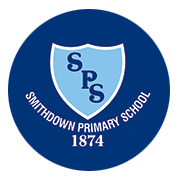
Year 3 Winter Crafts
WHAT AN AMAZING TURN OUT! Thank you to all our Year 3 parents and carers for coming and helping finish off our DT mechanism cards.
Thank you!
33
Cross Curricular Planning
We plan and tailor our curriculum to make the most out of pertinent cross curricular links. For example, when year 4 study the Romans in History, they study Italy in Geography and Mosaics in Art.
Please see our individual curriculum pages for more information.
Maths Across the Curriculum
Mathematics is a server subject and teaches children fundamental skills that allow them to access many other areas of the curriculum. Below are some examples of the links between Maths and other subject areas. These also demonstrate how making links between Maths and different subject areas can deepen mathematical knowledge, understanding and skill to develop true mastery.
Science and Maths
Maths and science are tightly linked together. Almost every scientific investigation is likely to require one or more of the mathematical skills of classifying, counting, measuring, calculating, estimating, and recording in tables or graphs. Statistics are used extensively in Science. Most charts and graphs used in science are initially taught in maths lessons.
Geography and Maths
Physical Education and Maths
Design Technology and Maths
Computing and Maths
Art & Design and Maths
History and Maths

WHAT AN AMAZING TURN OUT! Thank you to all our Year 3 parents and carers for coming and helping finish off our DT mechanism cards.
Thank you!
33
We were blown away with how much the children already knew about WW2 and the impact on Liverpool. They loved seeing the museum and everything in it. Please ask your child about their trip at home. 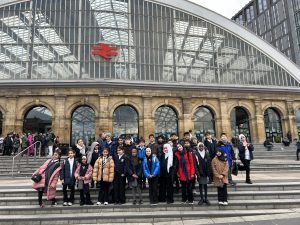
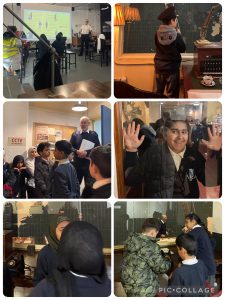
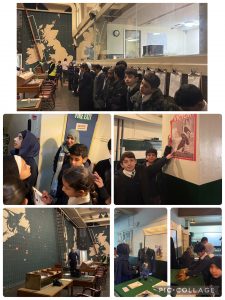
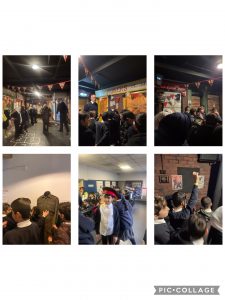
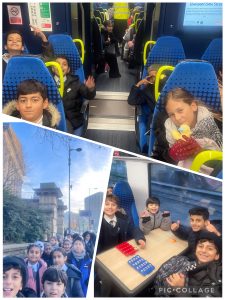
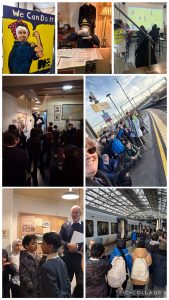

1JR have had lots of fun this afternoon on our walk to our local park. We looked at what we could see when looking north, east, south and west. We also looked at how our environment has changed for winter.
52
Today we have learnt why Britain rationed during WW2 and why it was so important. Firstly, we guessed how much food people were allowed. We have created rationing posters to convince others! 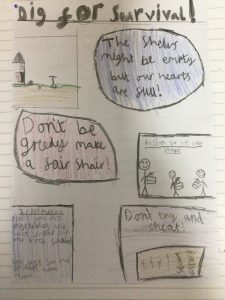
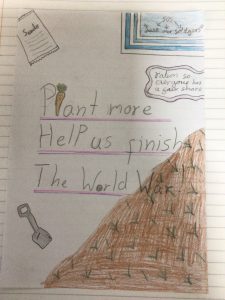
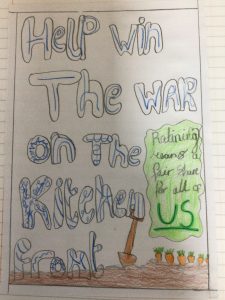
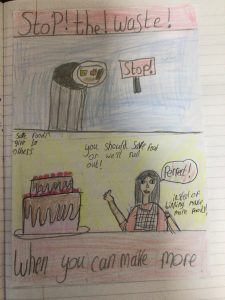
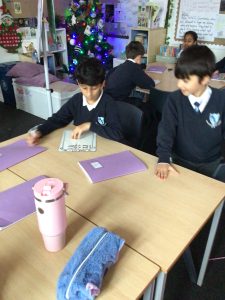

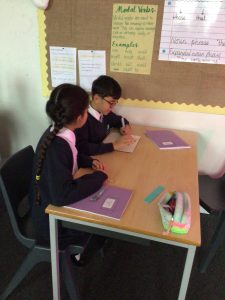

Today we have used data from our investigation to create a database on Google Sheets. We used the database to answer questions such as ‘Who jumped the highest?’ And ‘Who jumped higher than 1.9m’. 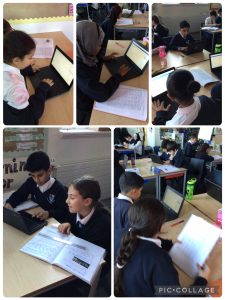
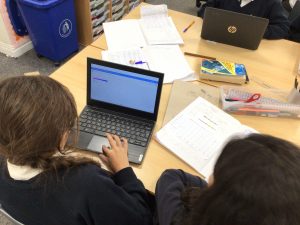
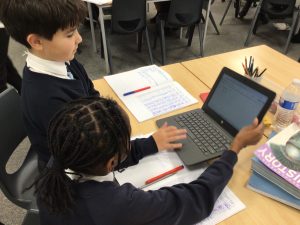
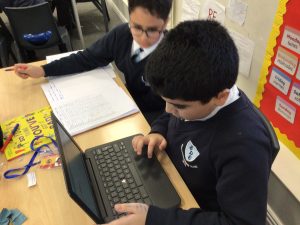
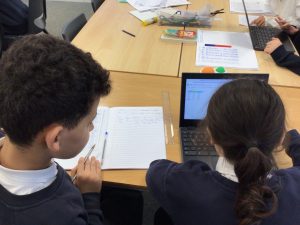
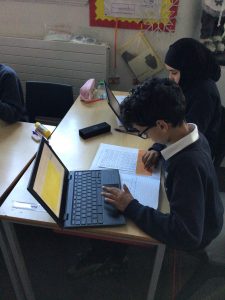
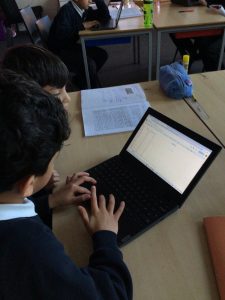

Y1 PK went on a Welly Walk to Crown Street Park. We followed directions – North, South, East, West and spotted what we could see. We also looked for signs of Autumn and that Autumn is changing into Winter.
6
On Friday we learned so much about space and how Neil Armstrong explored the moon. We also used teamwork and communication skills to recreate images about space .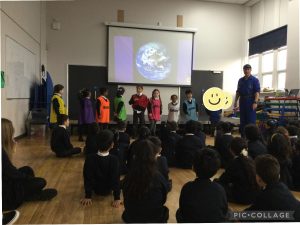

In Year 5, we have been designing our sets for Goodnight Mr Tom, either based in Little Weirwold or London. The children did a fantastic job of thinking of the different dimensions and what props they will be designing. 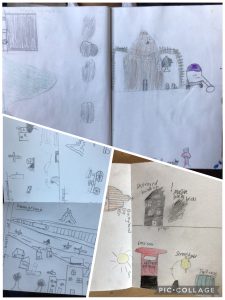
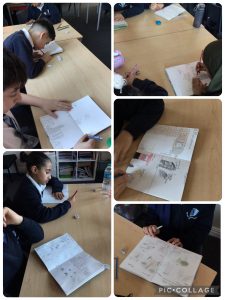
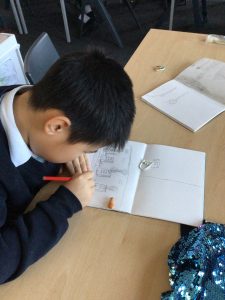
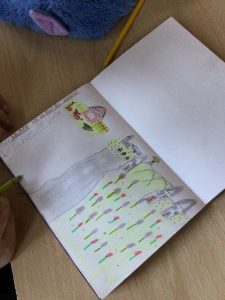
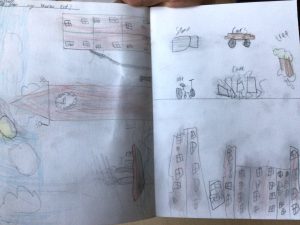
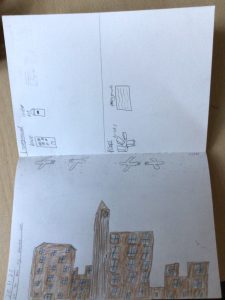


Last week, Y5 created art work using setting descriptions from our class text ‘Goodnight Mr Tom’. We highlighted key phrases then accurately tried to recreate the wonderful village from WW2. 
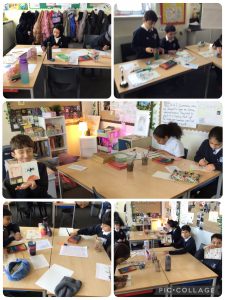

We have written scripts for two characters in our book. We have used our inference skills to create a conversation that might have happened between them. Then we had some children perform their scripts to the class.
183

Year 2 worked so hard on their carbon printed poppy art for Remembrance Day
168

To think about those who have lost their lives, we created some rhyming poetry. We based our poems on poppy fields, just like our art work.
180
After learning about life in the trenches for the soldiers in WWI, we wrote (in role) letters home to our loved ones …
9
Year 2 had a beautiful remembrance morning. We wrote acrostic poems and created some beautiful poppy artwork.
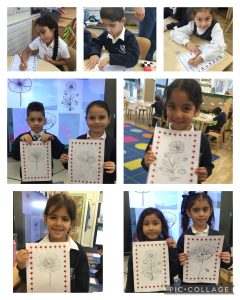

Year 3 have started Remembrance Day by focusing on some art work that uses paint, fabric and stitching. When they are dry we’ll add some stitching on them to add colour and texture.
164
Starting our new book, we met a character that loves the sun light stroking her skin as she dances. We used this image to create our own to show how the sun makes the girl feel.
163

What an amazing session with mini medics. We learnt all about DR ABC and first aid. The children loved it. 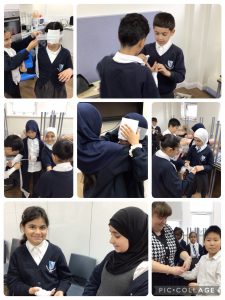

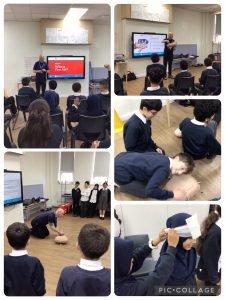

Great effort on our final piece in art. Painting with scissors has been a great skill Year 3 have gained over the last term. No pencil markings, just free hand cutting. Everyone has become more confident with this technique and we have some amazing collages of some Ancient Egyptian art work.
151
We are planning our instructions for how the Ancient Egyptians would have mummified a body to preserve it.
136
We had a wonderful workshop this morning to celebrate Diwali and reinforce the work we have already done in Hinduism. We listened to a story, danced and created lanterns.
122
We think our sketches are perfectly matched to our ‘comicography’work we completed yesterday!
22
We all became archaeologists for the afternoon excavating and finding ancient Egyptian artefacts. We spoke about what we learn from the things that can be found, which are thousands of years old.
114
We have looked at sketching parts of a chosen picture to focus in on different sections. We are getting ready for next week, when we’ll be recreating our chosen picture using the painting with scissors technique.
125
We had a great session with Loti, talking about how we can be different but are still all humans. We spoke about accepting each other and living alongside one another, which can make us stronger.
124
Today we had a look at our local park on digimaps to find its features. We then planned out a walk that we’re going to complete. 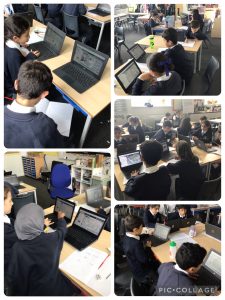
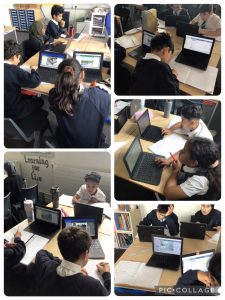

What a super day out! We mummified a body, spoke about what the Ancient Egyptians would have done with dead bodies and went on a scavenger hunt to find information out about the Egyptians.
164
We had a very fun science lesson yesterday recreating the frog life cycle and guessing which stage they were! LOTS of laughing in 5JH.
A student even went home and created a poster as extra homework. 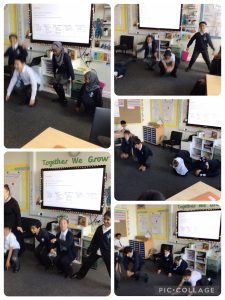
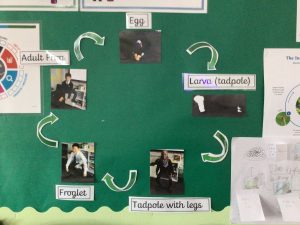
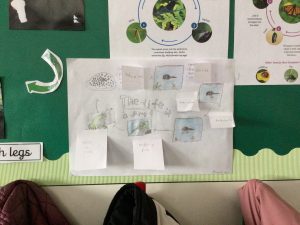

WOW! Just look at these posters informing the reader about the Giant Panda !
38
Great work from Year 3 today trying to recreate Henri Matisse’s work. We cut up pieces of paper to make collages.
223

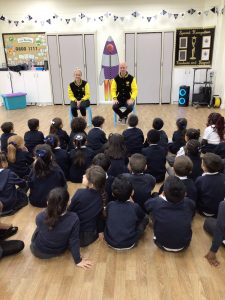
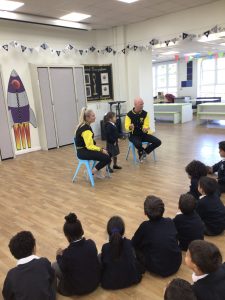
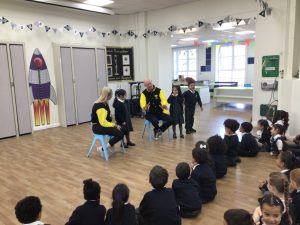
How lucky are we in Y1 to be learning sign language with Hands. We have practiced some greetings this week.

We are learning about Andy Warhol and Pop Art and will be applying the technique to animal art to link with our Science and Geography units of Evolution, animal adaptions and endangered animals.
34

Year 3 had a lovely experience this morning designing cakes based on their local area. Lots of great ideas and presenting skills being used.
307
We had a fabulous day at the beach! We loved exploring, playing, and learning together.
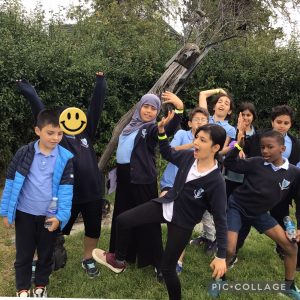
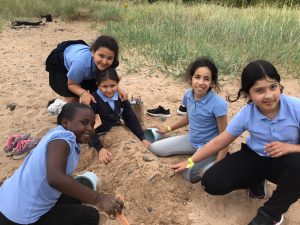
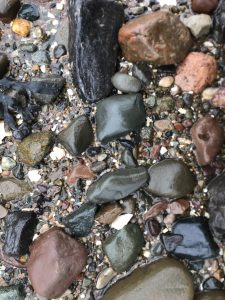
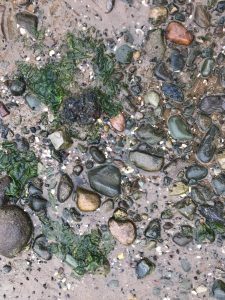
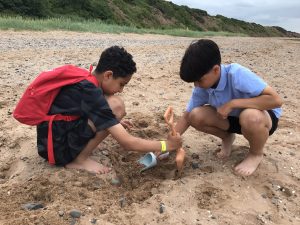
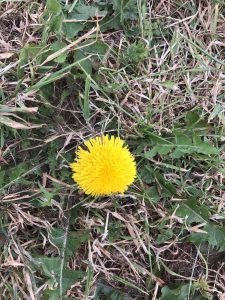
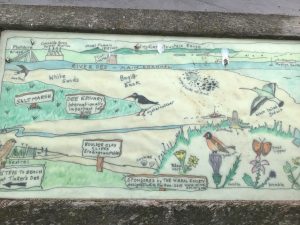
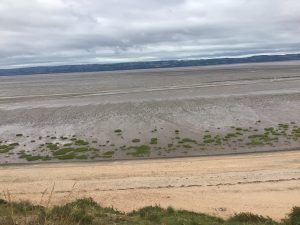

What a day! We had party games, cake and presents for our school turning 150 years old. Happy birthday Smithdown 🎂 🎁 🎈
422

A wonderful last lesson writing up our non-chronological reports on the Amazon. 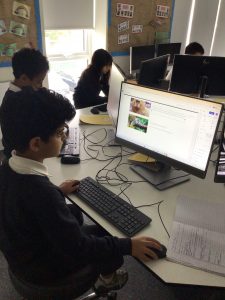
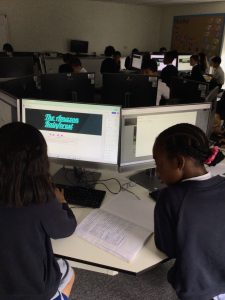
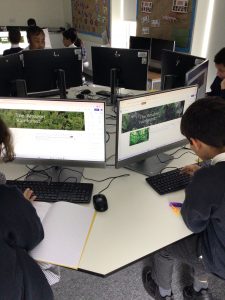
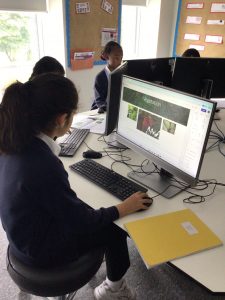

Year 3 & 4 had a wonderful morning celebrating our school’s birthday. We enjoyed some yummy ice cream together!
62

We had a wonderful day yesterday celebrating 150 years of our school. The children loved playing traditional birthday games 🎁, having a boogie 💃🕺and they all enjoyed some ice cream 🍦
48
Year 4KM had a gorgeous day at the beach exploring. We carried out some fieldwork while using four-figure grid references.
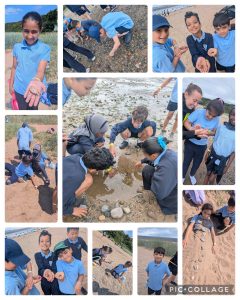


In English, we read the story Leon and the Place Between by Grahame Baker-Smith. One of our activities was to create a poster for the circus.
387
We have had an assembly and a workshop this week to inform the children about CO (carbon monoxide), the dangers of it, how it is produced, how it can be detected and what the symptoms of CO poisoning are.
61
Today the children planned an investigation about solubility. We had a range of investigations and talked about reversible and irreversible changes. 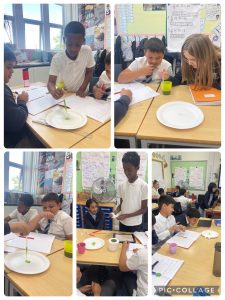
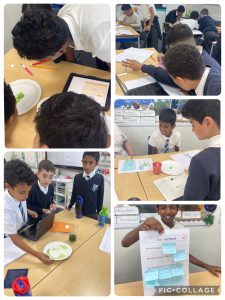

Today, we learnt that biomes are places with similar climates, landscapes, animals and plants. These children created biomes representing deserts, rainforests and savannas.
372

In groups we created different biomes of our worlds. We thought about, climate zones, temperatures, vegetation and animals that would live in our different biomes.
373
Today we looked on digimaps for the first time to find out where the Amazon is and found out some key facts about it. We looked at population, climate, biomes and much more. Amazing work year 5. 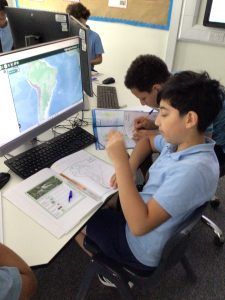
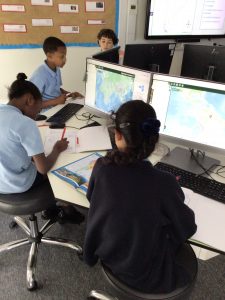
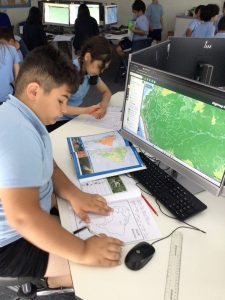
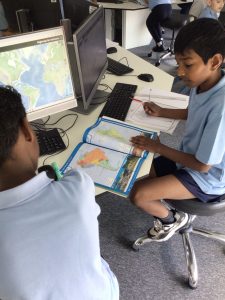
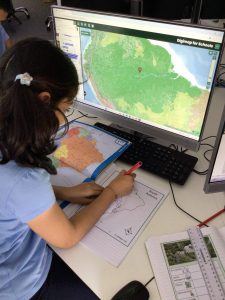

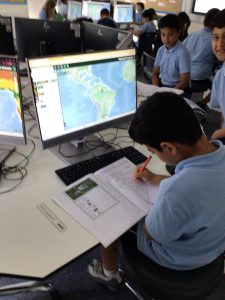
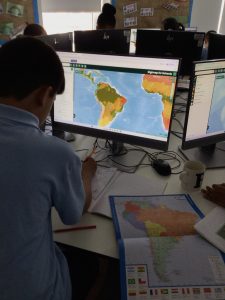
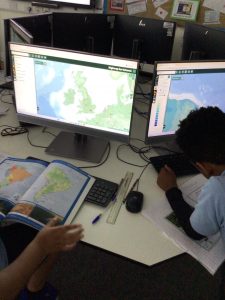
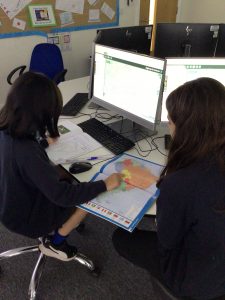



Last week we had a performance based on the experiences of refugees. It was brilliant performed and we even had a Q&A session at the end. 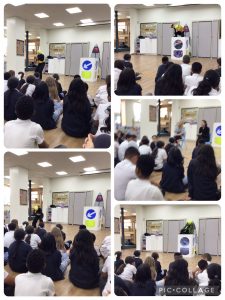





We looked at why our world has different climates and we also explored digimaps to find different temperatures across earth.
73
In History this week, we looked at what happened to the Anglo-Saxons and the Vikings. We learnt about what happened up to 1066 then the fight for power between 4 potential kings. We split up into Edgar Atheling, Harold Godwinson, Harald Hadrada and William Duke of Normandy. We had a very lively discussion about why they think they should be king and debated against the other teams. The children were brilliant and Edgar Atheling was our class winner (even though in the past it was originally Harold Godwinson then William Duke of Normandy). 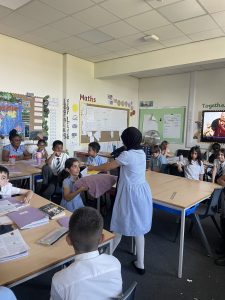
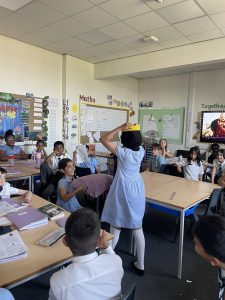

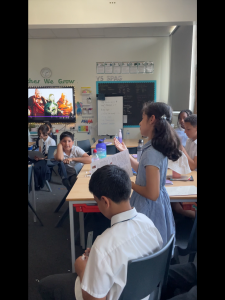

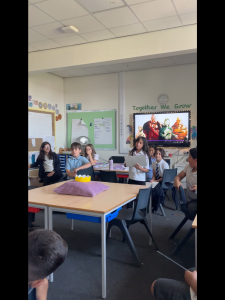

We have loved making our trains last week in Year 5. We’ve built our chassis, adding electrics and tested our locomotives. We were even visited by a local engineer from Stadler Rail Company to help us with our electrics and testing. 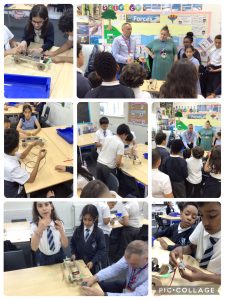
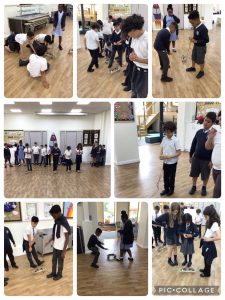

We read a book that helped us understand what refugees are and how they might feel and spoke about the possible reasons for why someone might need to become a refugee.
390
For Refugee Week, we talked about the different communities that we belong to. We also designed welcome baskets for people seeking asylum and refuge. We agreed that working together as a community is a superpower, and spreading kindness makes the world a better place.
364
We have started our new history topic of Ancient Greece and for few minutes this afternoon, we had a go at sketching Zeus.
63

What a lovely picnic this afternoon! A big, huge thank you to all children, parents and staff for all the work and effort everyone has put in for our 150 year celebration. Thank you everyone for coming to celebrate this afternoon.
437
Just a snippet of our fantastic artwork from Chatsworth Street School in the past and what it looks like now. 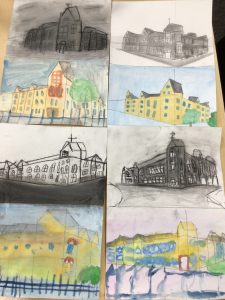

We had a great walk around our school finding new and old parts of the buildings.
376

Year 3 recreated two very old pictures today. Another interesting look at the past of our school.
385
Yesterday we celebrated Eid. They produced beautiful posters related to how Eid has changed over the last 150 years (linked to our 150th school celebration).
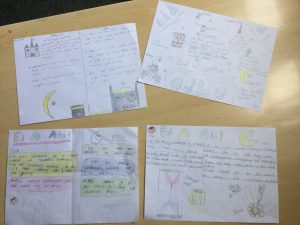

We had AS Creative deliver a super session to link with our 150 years celebrations. Year 3 we’re looking at events through our school’s life, so in our session we focused on WWII. We did freeze frames to represent evacuation, rationing and the blitz. It was a great way to think about the children who would have experienced this event in our school in 1939-1945.
369
Thank you to our parent volunteers, hennaliverpool.com and Hennabyinaaya for helping us to celebrate Eid Al-Ahad.
95

Amazing skills practised by Year 3 today! Continuing with our 150 year celebration, we used charcoal to create an image of our school from the 1960s.
382
As part of our 150th anniversary, Year 2 have been researching famous people from our local area. We combined this work with our computing topic! We’ve made posters about Natasha Jonas (who went to our school), Tony Bellew, Gerry Marsden, Ali Al-Hamadi, Ringo Starr and Cliff Marshall
383
We have worked super hard to create a scaled timeline of events in Liverpool and our school from 1874 to 2025. We added in things like when our school was created, the blitz in Liverpool, boys and girls merged in school and when our local mosque was built.
379
We have just started working on our Geography project, planning a route around Liverpool to take in all the famous tourist sites. We also used Google Maps to help plan our routes, directions and visualise the landmarks.
74
We went to our “Smithdown Archive” today to look at the log books from Chatsworth Street School. Some of the books are nearly as old as our school so we took extra care looking at them.
382

Our school is now over 150 years old! To celebrate, we are dedicating some work this week to look at our school through time and what events have happened during its time. We started off our week by looking at photos of “Chatsworth Street School” and the area around our school. Everyone was so excited and had lots of questions about our school.
394
Year 3 have been exploring artists who use natural materials. Anna Atkins created one of the first books with photographs in it without using a camera! We practised the same technique she did nearly 180 years ago. We used light sensitive paper and natural things we found to create our cyanotype photos.
410
These children worked so well together to complete this 500 piece jigsaw. They’re ready for a 1000 piece one now!
439
Year 3 and 4 had a great time learning a variety of circus skills linked to our class text.
84

We were very lucky today to have a visitor from the circus 🎪 We learnt some awesome tricks and used a range of props. Smiles all round!
410
Our Chester Zoo trip was fantastic! We saw lots of interesting animals in the lovely sunshine. We also had a great session with Chester Zoo staff about our UK native species.
452

We absolutely loved going to Chester Zoo to learn about the animals and the trees. All of the children behaved exceptionally and loved the trip. 
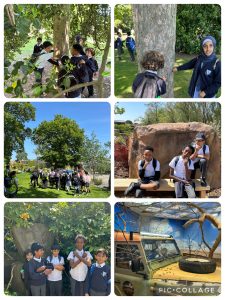
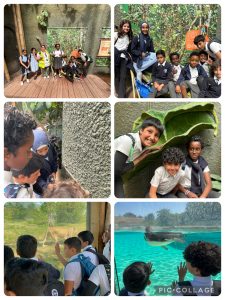
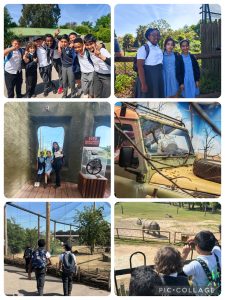
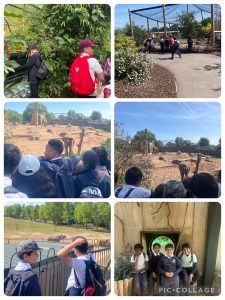
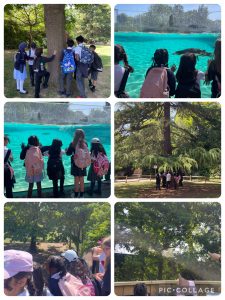
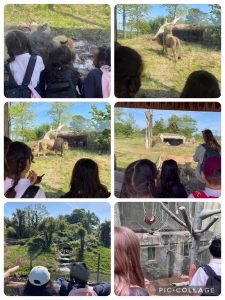
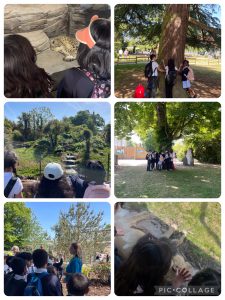


We had a fantastic day exploring Chester Zoo. The children loved looking at the variety of animals. We saw chimpanzees getting fed, lions having a nap, penguins splashing water and even explored the bat cave. The children had smiles on their faces all day! 🦁🐒🐧🦇
454


Today we had a visit from Chester Zoo. We looked at animals and plants in our school grounds. 

We absolutely loved going to Martin Mere for our immersive Viking experience. We took part in weaving, foraging, thatching and defending the village. 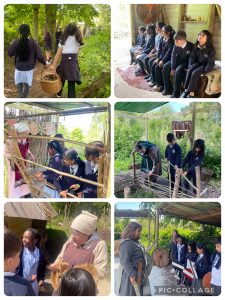

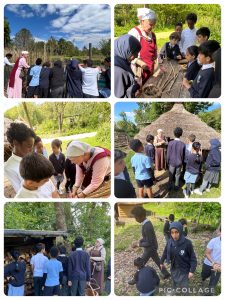
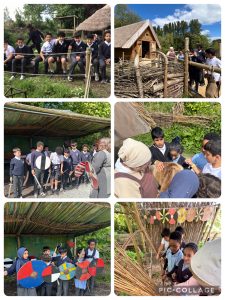

We had a very exciting start to our week with our first Chester Zoo Workshop on UK Wildlife. We used the iPads to find some species in our playground. The workshop got us excited for our upcoming trip to the zoo on Thursday. 🐒🐼🐯🦁🦋🐍
458

This morning we focused on synonyms for the 6 words we have been looking at in Jemmy Button – voyage, magnificent, civilised, year, gazed and savages. We then recorded the best alternative words to use in our future work.
92
We have had boys and girls finding multiples of 2 out on our yard. They grouped objects into 2s and then found the total. They explored so many different ways to show their 2 times tables. Super work!
510
We have loved starting our new art topic. We looked at Frances Hatch who gets the pigment out of things like grass, rocks and poo! We used soil to help us write about Frances and the work she does.
65
Today we celebrated Earth Day and we made kites today from recycled materials. We loved flying them outside.
457
Today we learnt about renewable resources and what we’re hoping for, for the future. We made websites to promote our ideas especially since it’s our future! 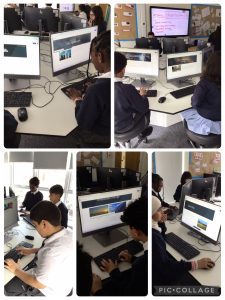

The children had a fantastic day celebrating differences with Everton in the Community. A massive thank you for the wonderful workshops.
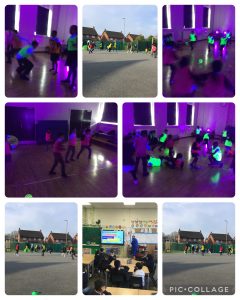


Starting off the day with a very interesting and exciting game of dodgeball!
88
This amazing piece of work was all done at home about WW2! I was so impressed with the amount of knowledge there was about so many different aspects of the war. SUPER WORK!
573

Today we had a visitor in to teach us about WW2. We trained to become special volunteer police officers and followed commands given in the war. We looked at Erie facts and even had time to role play.
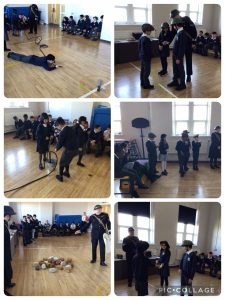
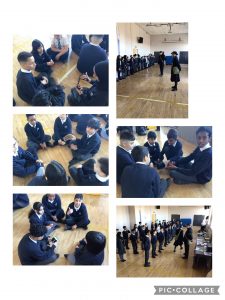

We made our own information leaflets to explain all about the festival / celebration of Eid.
79

Lovely to see all our children dressed up for Eid. Lots of families have been fasting through Ramadan and have had a lovely few days celebrating Eid.
537

We have had a lovely day at Martin Mere today.
we helped Ava find out which way she had to migrate, went on a treasure hunt, explored the wetlands and enjoyed the play area too!

Some children were invited to take part in some maths activities at Goodison Park stadium. They completed challenges and got to see the stadium. What a fun day! 🧮 
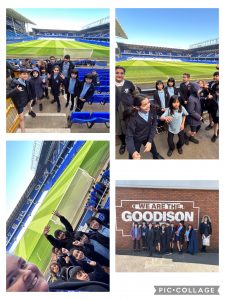


Yesterday, we had an amazing trip to watch these athletes. The work they put into practising and training really inspired some students. Also, some children met the presenter of Newsround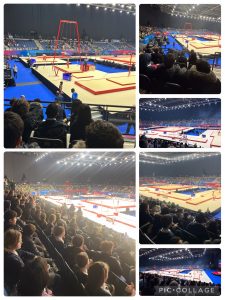

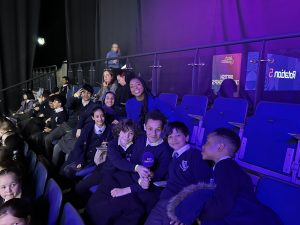 and even got a picture!
and even got a picture!


For science week, we researched Ruth Wakefield. We learnt all about the temperatures needed and the variables that she changed. We then had a lesson in cookie making with our wonderful cook Monica and decorated the cookies with her face. 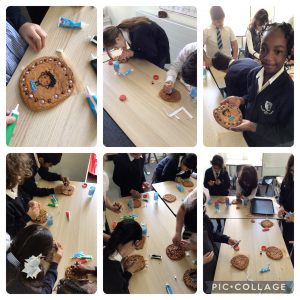


Last week we had a wonderful time with our biscuit investigation. Our question to investigate ‘Does the thickness of a biscuit affect it’s breaking dunk time?’ 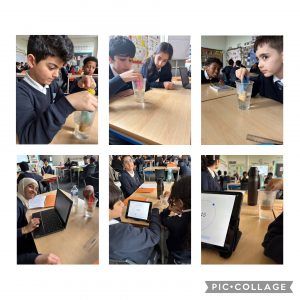

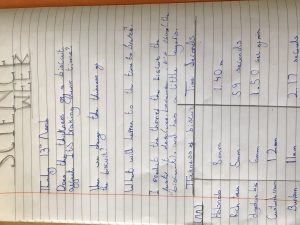

Year 6 investigated how long it took a range of biscuits to dissolve in warm liquid and presented findings using graph software.
93
We have planned out our experiments in order to see how we can measure craters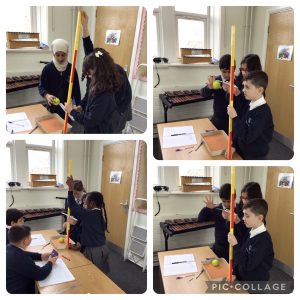 and what affects the result. We had a create time changing variables and recording our average in order to make it a fair test.
and what affects the result. We had a create time changing variables and recording our average in order to make it a fair test.

As part of our Science Week work, Year 6 learnt about Ibn Al-Haytham, the man credited with inventing the pinhole camera. As our Lowry portraits were so good, we couldn’t resist applying our artistic skills to this wonderful scientist too.
90
This morning we have been supporting Laura from Metal with a new card game all about sustainability. We were lucky enough to be the first school to trial the game and learned a lot about symbols and ways to upcylce and compost. Thank you Laura!
70
Y3 have been busy upcycling their fashion items ready for their fashion show for parents. We have learned all about recycling and sustainability over the last few weeks which has inspired us to carry on out of school. Thank you metal!
69

Today we had a visit from Cruella De Vil who wanted to steal all of the Dalmatian puppies, luckily the classes were able to find all 101 of them and saved the school! What an amazing World Book Day 2025. 


We loved sharing our languages last week and teaching children different words. Some children even wanted to record these so that we could share our language with others. We have some excellent little teachers in class! 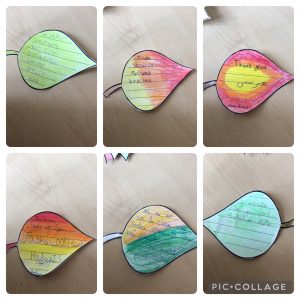

Today we used freeze frames to think about how people might have felt during the announcement of WW2. We looked at the different reactions in our book ‘Goodnight Mr Tom’ and compared different emotions. 

Year 3 celebrated International Mother Language Day. We wrote some phrases, in our home languages, and taught these to our friends. In our class, we speak in 12 different languages.
503
Year 3 had a great afternoon making their own recycled paper and adding their own designs to this.
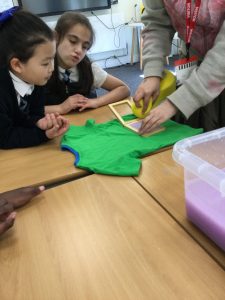
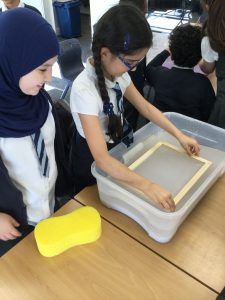

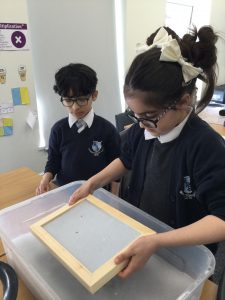
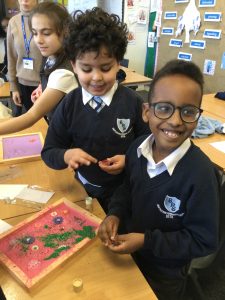
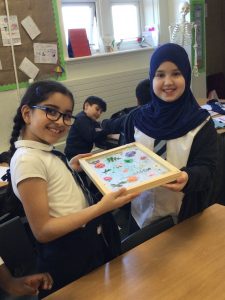

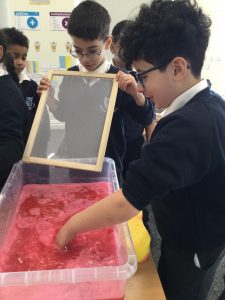
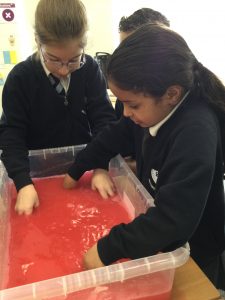
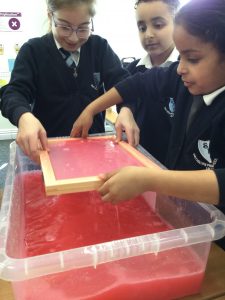

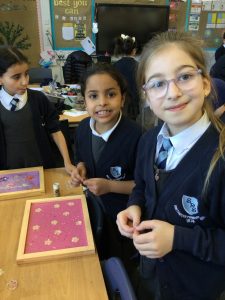
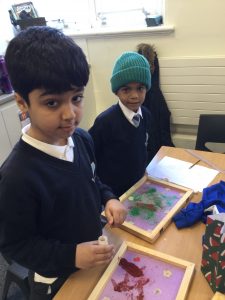

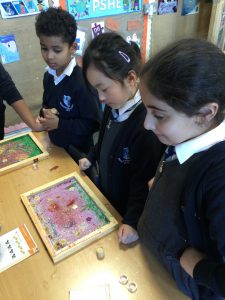
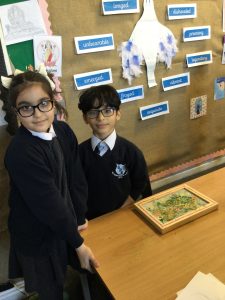
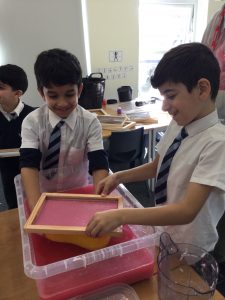
94

We had the best morning using drama to learn about early civilisations, with a focus on Baghdad (Early Islamic Civilisations).



On February 21st, it was International Mother Language Day. To celebrate, we have been learning words and phrases in different languages. The children have been fantastic teachers.
519

Our designs for our 150 Year bunting are really coming along. We are going to stitch “TOGETHER WE GROW” along with some pictures that remind us of school.
533

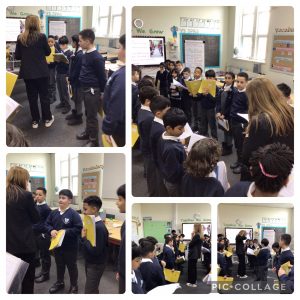 Yesterday we looked at clues for our new book ’Goodnight Mr Tom’. We wrote predictions and today we discussed evacuations from cities to the countryside and arguments for and against. We invited in Mrs Ridley to walk down our ‘conscience alley’ to hear our reasons.
Yesterday we looked at clues for our new book ’Goodnight Mr Tom’. We wrote predictions and today we discussed evacuations from cities to the countryside and arguments for and against. We invited in Mrs Ridley to walk down our ‘conscience alley’ to hear our reasons. 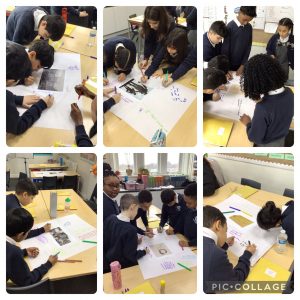

Thank you to our two school councilors who helped with the vote counting today. A great way to learn about democracy.
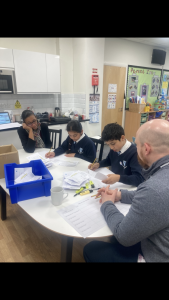



We have been intrigued learning about Miep Gies and the role she played in helping to hide eight Jewish people in an annexe in Amsterdam during World War II but perhaps more importantly, how she was the one who found and kept safe Anne Frank’s diary.
106
We made art that we would find in Palaeolithic caves. We worked together and made our caves walls as realistic as we could.
108
We had an amazing visit from a local archaeologist, Dr Hill, who brought with him so many artefacts from the Stone Age and Bronze Age. We had time to look at stone axes, arrow heads, tools and weapons made from bone and so much more!
478
We were very lucky last week to have some visitors in our class talking to us about keeping our environment healthy and how to look after plants. We all planted our very own sunflower seeds to take home. 🌻
532
Today we learnt about the global supply chain and the different stages our products take to get to us (the customer). We debated which part of the supply chain was the most important and how fair the pay was. Our class debate was very passionate! 


We had an amazing afternoon in our lion dancing workshop. Happy Lunar New Year! 


Some of these snakes just keep growing and growing ….
84
We all practised our binca running stitch so that we are ready to create our 150 year celebratory bunting.
508

Year 4 designed their Roman inspired mosaics using technology before creating their own paper version.
We’re very excited to create our mosaics next week using tiles.
89
This week in science we have been looking at night and day. We have been learning about the rotation of Earth and how this creates daylight and nighttime. 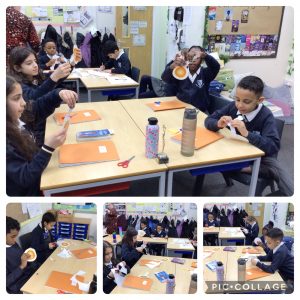


Today, year 3 mixed their history knowledge on the Palaeolithic cave people with their art skills by recreating cave art with charcoal. The children worked like our artist Laura McKendry and completed a group activity on the floor. This allowed them to work on a bigger scale and move around their work.

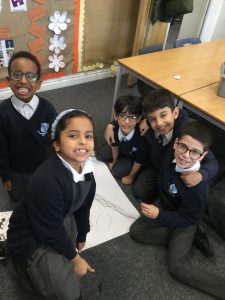
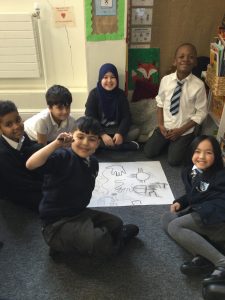
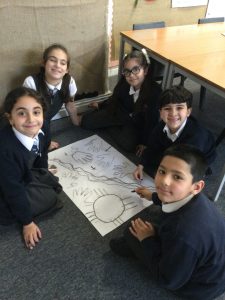
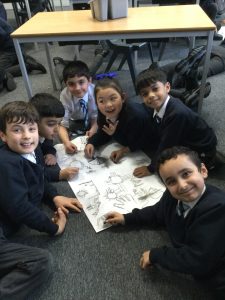
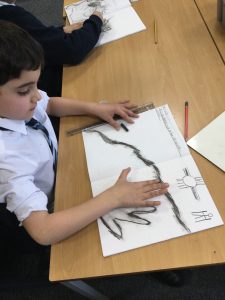
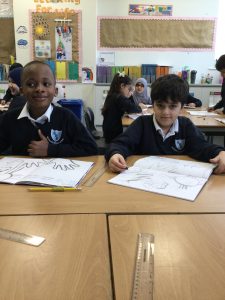
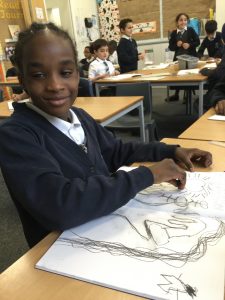
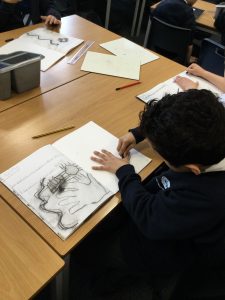
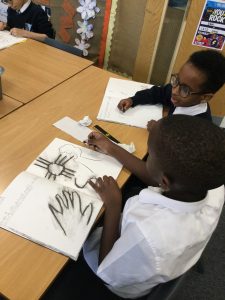
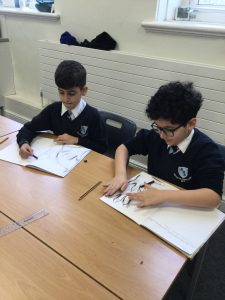

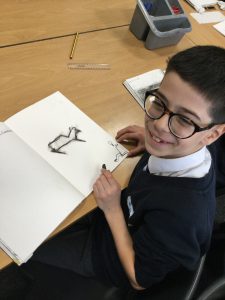
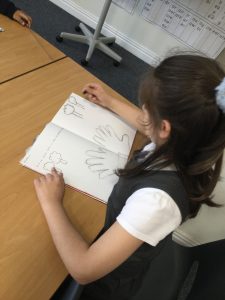
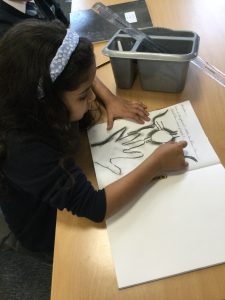
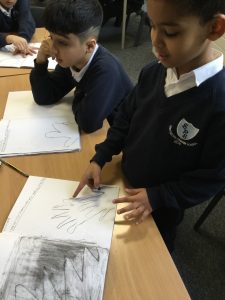

We created some designs that we may use for our 150 year bunting. We will practise stitching so that we can attached our designs.
118

Today we tried to recreate the direction and movement of our solar system. We discussed how this is not to scale but wanted to show what we had learnt about ‘Earth and Space’ so far. Please ask us questions about the solar system! 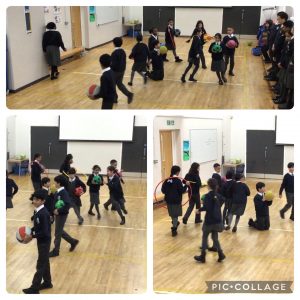

We have loved making our moon buggies today. Do you like them?
536

Year 2 have been busy sawing their doweling to make their wheels and axles for a new moon buggy!
514
A wonderful afternoon with our fabulous parents and carers.
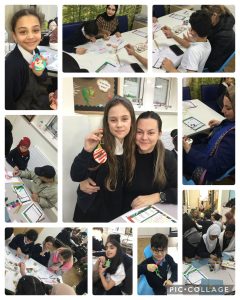

Our Nativity Slideshow.
Thank you all for coming to watch. We loved performing for you.
532
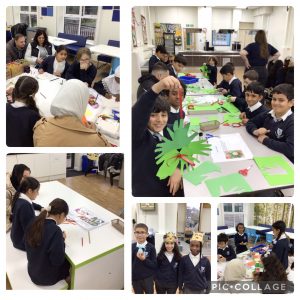
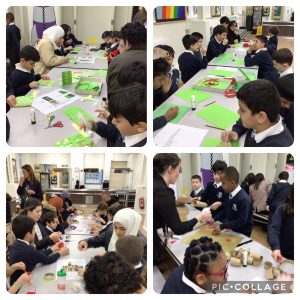
What a lovely afternoon! Thanks to all the parents that came and helped out with the winter crafts. They all looked amazing.

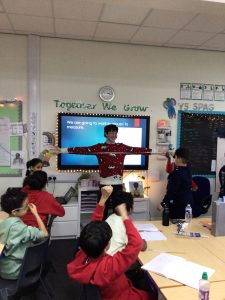
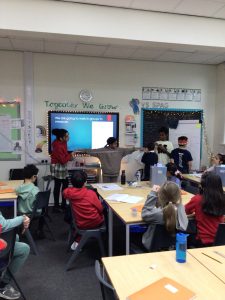
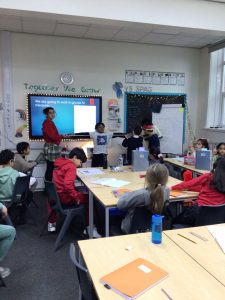
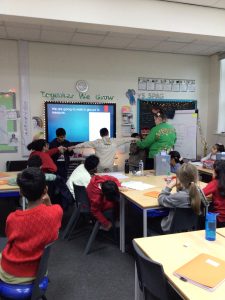
 We took measurements of children from reception all the way to our eldest staff member! We then created a scatter graph of our results.
We took measurements of children from reception all the way to our eldest staff member! We then created a scatter graph of our results.

We had a lovely morning with our Hands assembly and our DT craft activities. Thank you to all our adults who turned up to support us.
538

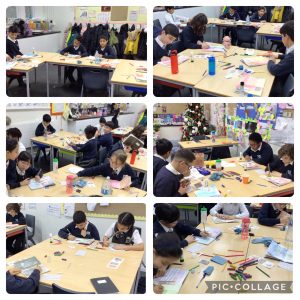 Today in our art lesson we looked at different examples of Arabic calligraphy and have had a go at our own.
Today in our art lesson we looked at different examples of Arabic calligraphy and have had a go at our own.

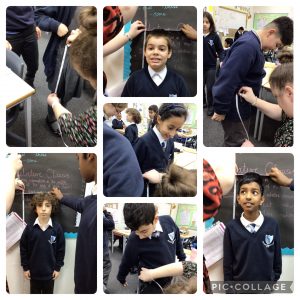
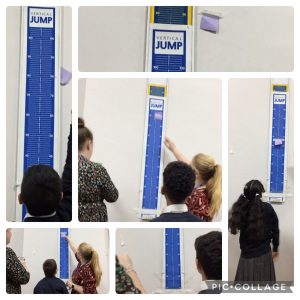 In science today we put our ideas to the test. we either chose to either investigate if children with the longest femur could jump the highest or if the tallest children could jump the highest. We completed the post it challenge and made sure our investigation was fair.
In science today we put our ideas to the test. we either chose to either investigate if children with the longest femur could jump the highest or if the tallest children could jump the highest. We completed the post it challenge and made sure our investigation was fair.

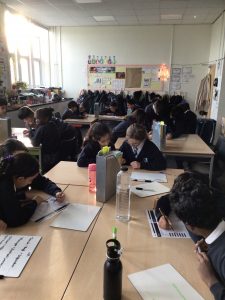
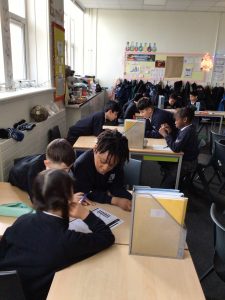
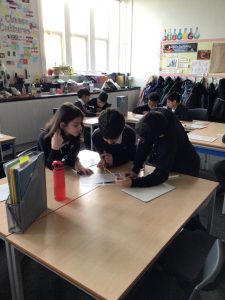
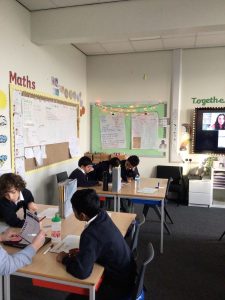
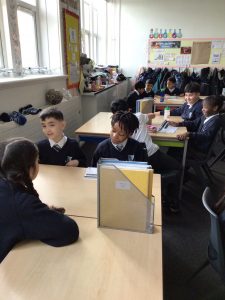
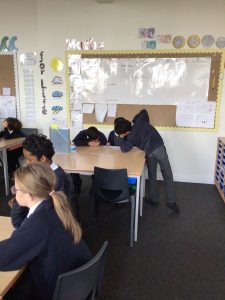
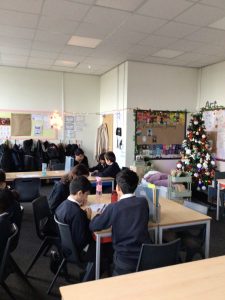
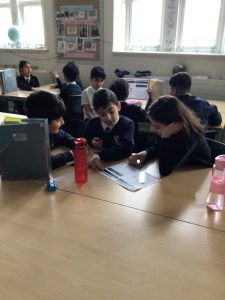 This morning we had a Premier League workshop to tell us all about the different jobs and skills we could get that are part of football. We learnt about football journalists, authors, medics, stewards, mascots, players and coaches. We then acted out being an interviewer, interviewee and clarifier.
This morning we had a Premier League workshop to tell us all about the different jobs and skills we could get that are part of football. We learnt about football journalists, authors, medics, stewards, mascots, players and coaches. We then acted out being an interviewer, interviewee and clarifier.

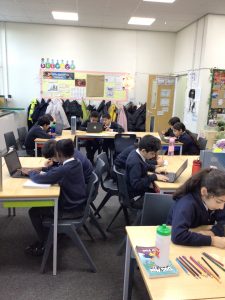
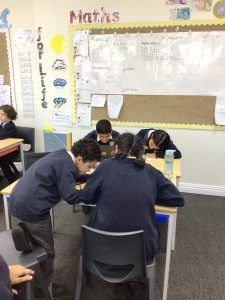
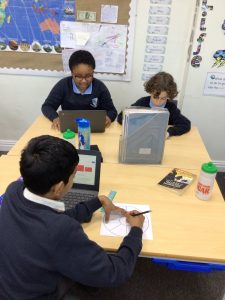
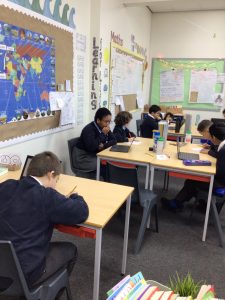

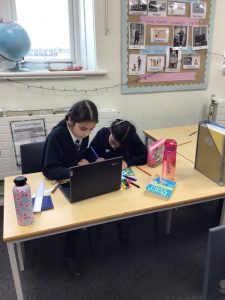
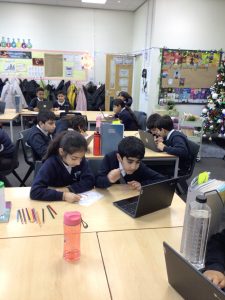
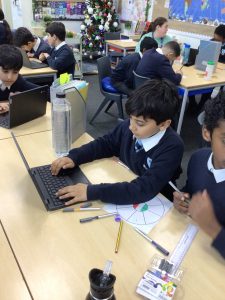 For our PSHE lesson we are celebrating differences. In previous weeks we have spoken about racism, bullying and rumours and now we are researching a range of countries and what their culture looks like.
For our PSHE lesson we are celebrating differences. In previous weeks we have spoken about racism, bullying and rumours and now we are researching a range of countries and what their culture looks like.

This week in Mathematics, the children in class RJP have been focusing on sequencing. We explored the vocabulary, how ‘sequencing’ means to repeat a pattern. The children used paint to create an ‘ABBA’ pattern firstly, following the pattern, ‘red, green, red, green’. We then had lots of fun demonstrating the ‘ababab’ pattern using Christmas pictures, and designing a colourful paper-chain. To extend the learning, we explored different patterns, expanding on the number of picture cards, colours, and using shapes which have been learned previously. This helps the children problem solve sequencing in a fun way.
Why not keep up this learning at home, by asking the children to make repeated patterns using different objects.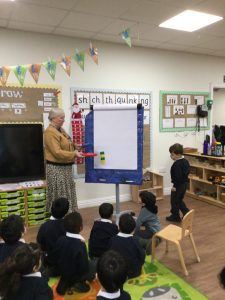
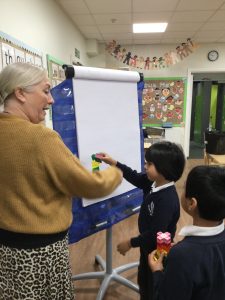
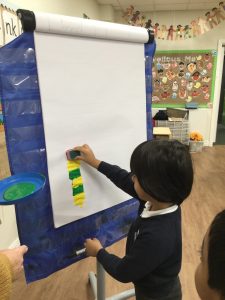
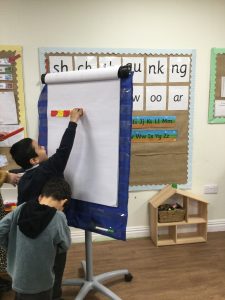
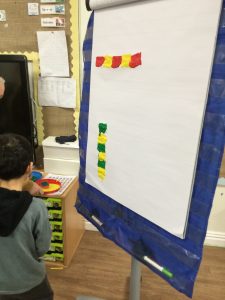
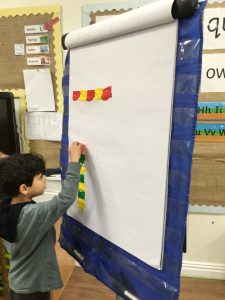
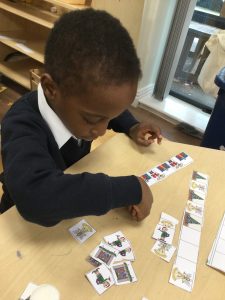
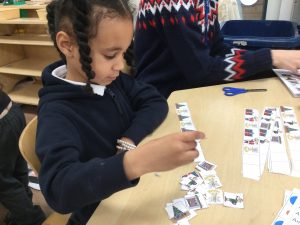



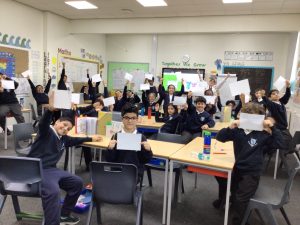
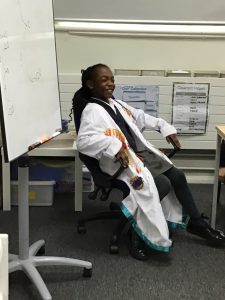
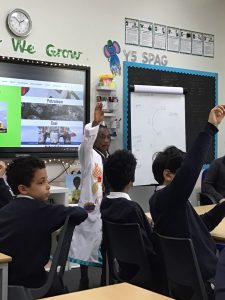
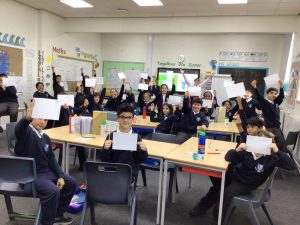 Last week we had a visit from NRG to tell us all about our use of electricity and what we can do to help. We have signed a pledge to use less electricity and water to help with waste of non-renewable energy.
Last week we had a visit from NRG to tell us all about our use of electricity and what we can do to help. We have signed a pledge to use less electricity and water to help with waste of non-renewable energy.

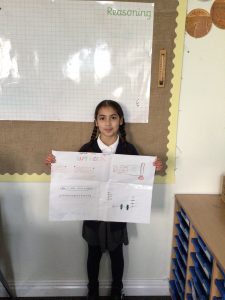
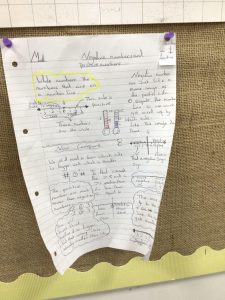
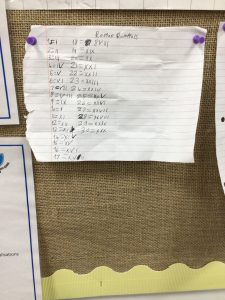
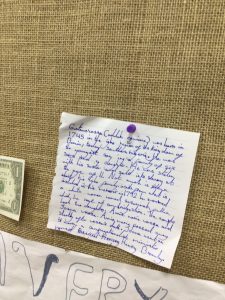 Some incredible examples of extra work done at home. I have loved seeing how passionate we are about negative numbers, Olaudah Equiano and Roman numeral – keep it up, we love proudly displaying your work!
Some incredible examples of extra work done at home. I have loved seeing how passionate we are about negative numbers, Olaudah Equiano and Roman numeral – keep it up, we love proudly displaying your work!

Yesterday we had a great time at the International Slavery Museum. We had a workshop in the ‘legacies of the transatlantic slave trade’ and then had time to explore the museum with our task sheets. 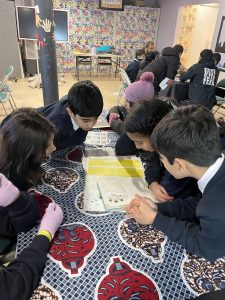
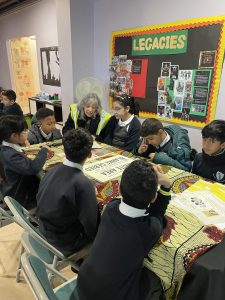
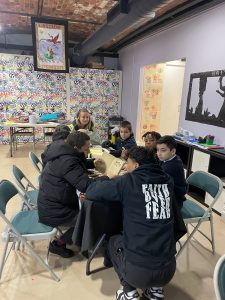
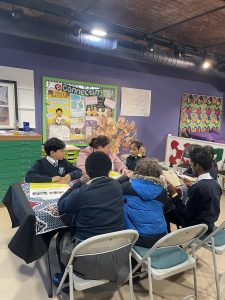
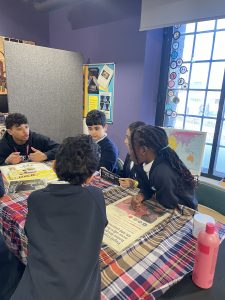
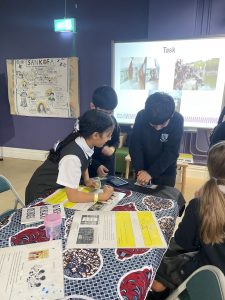
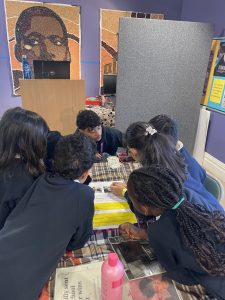
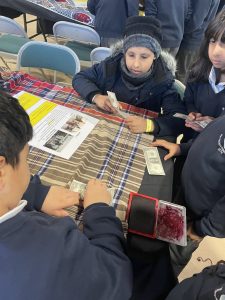

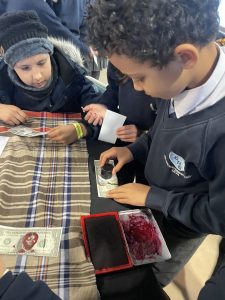

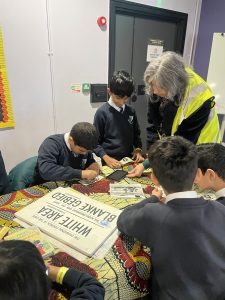
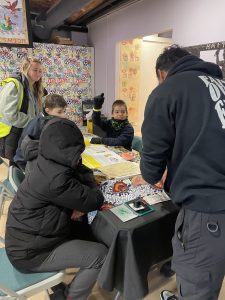
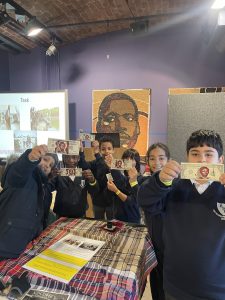

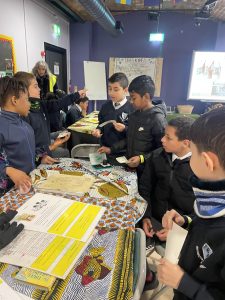
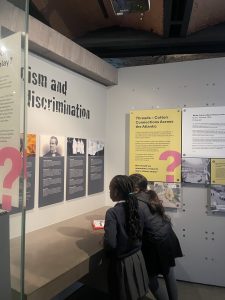
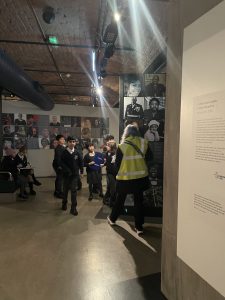
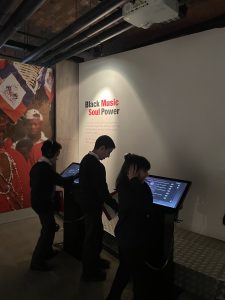
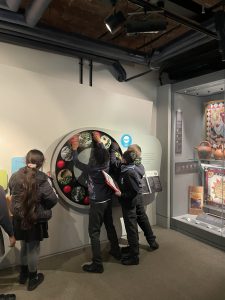
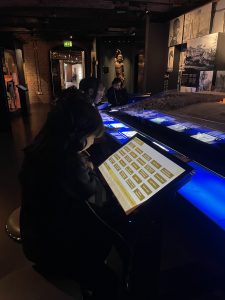
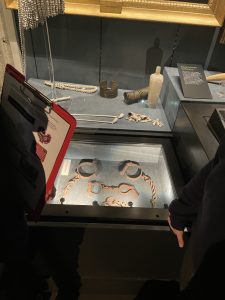
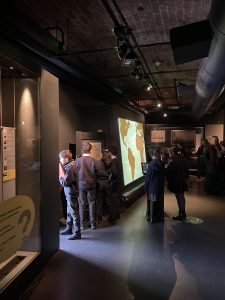
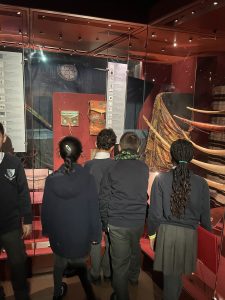
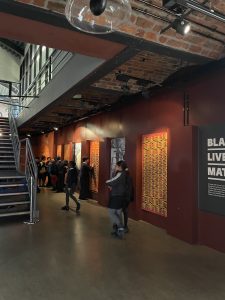

Year 3 had a great workshop this afternoon on how to save energy and how to be NRGenius’s. They had to create a powerful image representing why we use fossil fuels. We learnt all about renewable energy and how these are better for our environment. We ended the session by making a pledge to try our best to save energy. 💡⚡️
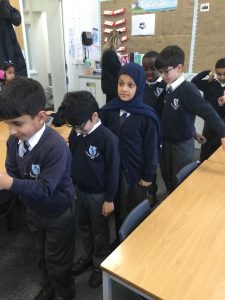
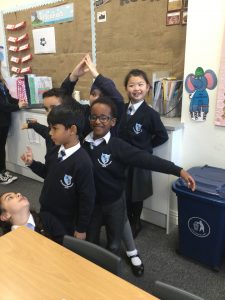
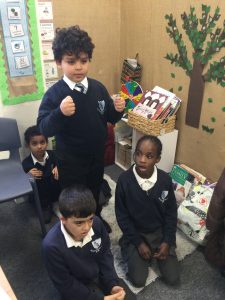
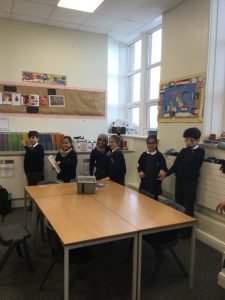
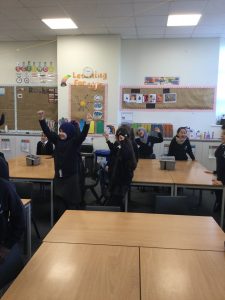
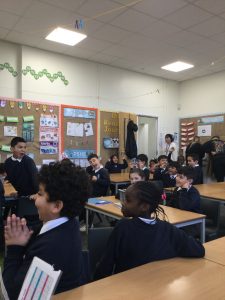
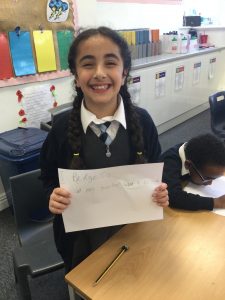
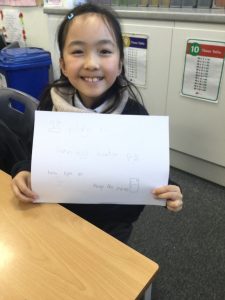
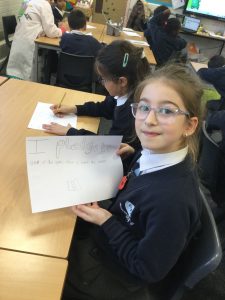
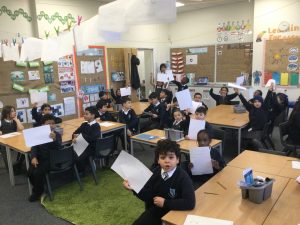



Today we have loved our class campfire. We enjoyed toasting the marshmallows, creating a s’more and having some hot chocolate. We even had a blast from the past with some children’s songs and rhymes. 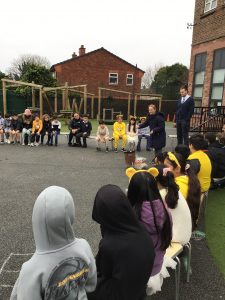
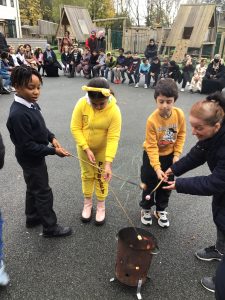
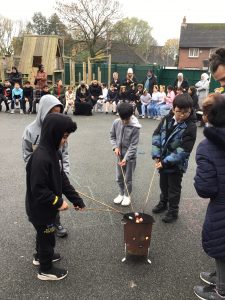
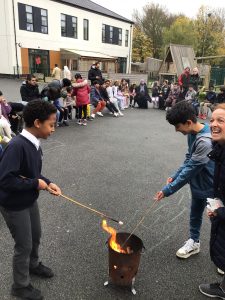
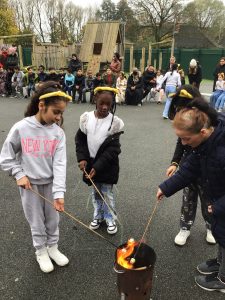
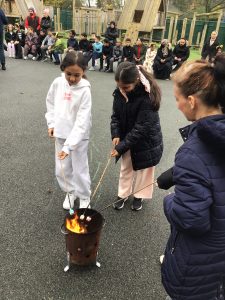
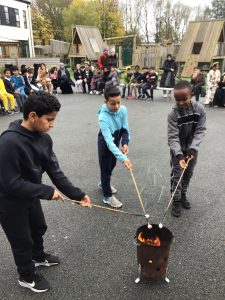
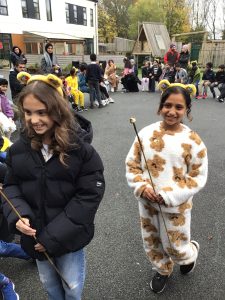
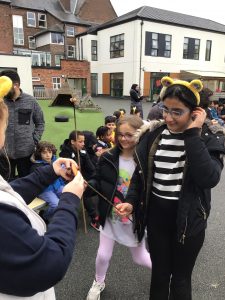
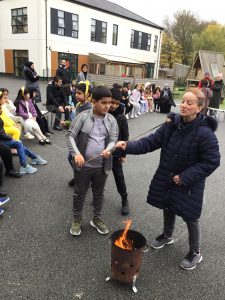
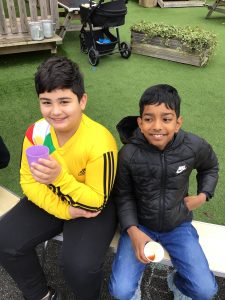
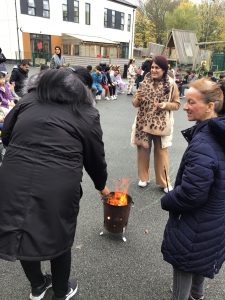
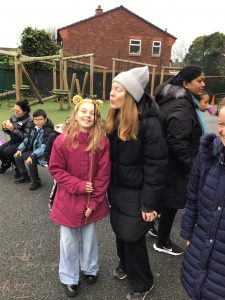

We’re now in the Islam section of our RE unit and we are learning all about the sense of community and how the mosque plays an important part in bringing the community together. We took the opportunity to utilise our artistic skills too.
99
We took part in a workshop this morning discussing values which are important in life such as respect, patience, tolerance and understanding.
116


11:00 11.11.2024
Huge respect in our class to recognise the soldiers that have fallen in the past. We did a minute silence in the morning and then created amazing poppy art work based on our art topic ‘painting with scissors’ in the afternoon.
533
Superstar 🌟sisters! Both have done work at home based on their current topics 👏. Well done guys.
534
After learning about Remembrance Day and importance of the symbol of the poppy, we had time to sketch our own poppies using pencil and oil crayons.
104

In Science, Year 6 have been learning about Charles Darwin as part of their ‘Evolution and Inheritance’ unit. Look at this incredible writing they have produced!
132
Year 4 had such a great morning at our Diwali workshop. We wore some traditional Hindu clothing, learned some traditional dance, and even got to paint and create our own diya lanterns.
109


We are having so much fun making our Diwali lanterns with rangoli patterns.

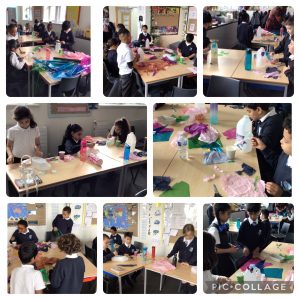 Today we are designing our Diwali lanterns for next week. We have learnt the story of Rama and Sita and thought about why Diwali is celebrated in Hindu religion. We are trying to focus on using Rangoli patterns.
Today we are designing our Diwali lanterns for next week. We have learnt the story of Rama and Sita and thought about why Diwali is celebrated in Hindu religion. We are trying to focus on using Rangoli patterns.


We are simply blown away by the writing we have recently produced. Our Year 6 classes are so invested in world issues – saving habitats and animals in particular. Have a read of some of the letters we wrote to the Rwandan Government, asking them to help protect the magnificent mountain gorillas 🦍
478
In Geography, we have been finding out about renewable energy sources: why they are needed alongwith the advantages and disadvantages of each.
469
We simply had to share a few more pieces of work as we think they are truly fantastic! Detailed information which is extremely well presented. Great work Year 6!
150
In Year 6 today, we combined our learning from Geography and English by using our computer skills to present the information we have discovered into Google Sites to create our own web pages.
160
Year 3 had another great ‘Hands’ practice. We are really enjoying learning new sign language.
456
Some AMAZING entries for the Merseyside Police competition! Children have worked hard creating lovely pieces of work with great messages as well. Well done to everyone who has submitted already. Last day tomorrow (Friday 13th September).
472
Earlier in the year, year 5 took part in a project with Primary Engineer and built moving locomotives with an electrical circuit. Today we celebrated each child taking part, awarded awards for best group work and also two boys took home the ‘Best communicator’ award. Well done, year 5!
472


We are starting to learn about all the different styles, colours, shapes and uses of Ancient Greek pottery here in Y6.
137

What a great Spanish day! Red and yellow everywhere 🇪🇸. Can’t wait for food and dancing later.
133

In Year 2 we have discovered Blooket and we can’t get enough! We’ve used it to test our times table knowledge this week (as well as lots more too.)
491
We had our second group to make our traditional Italian bolognese. They had a great time preparing the ingredient and seasoning it to perfection! Thanks to our amazing head chef once again – Monica.
161


This week year 5 have compared Liverpool to the city of Manaus in Brazil and plotted data and different style graphs.
145

We had an amazing afternoon erupting our volcanoes! We even had a very dangerous and violent composite volcano with thick magma which increased the pressure when erupting.
176
Happy Eid to all our families celebrating! We had a lovely day and week celebrating with all our children and adults.
475

Our first group created their very own authentic traditional bolognese sauce! We have linked our DT unit with our Geography topic of Italy. Super behaviour and sensible cooks.
159
We have created our volcanoes and painted them. They look amazing! We are going to erupt them this week and see what happens when an active volcano blows. Watch this space…
162
What are age ratings? How do they apply to us? What do they mean? Where are they used?
473
We created posters on Word.
We shared our favourite animals, changed the font, colour, size and style and even added images too,
Amazing work Year 2
524
Here is a FABULOUS finished skyline picture to accompany our Geography work on our ‘Walking Tours Around Liverpool.’ Amazing work from this young artist.
159
Super work creating our Bronze Age Bell Beaker pots. We created a similar shape and added patterns to them.

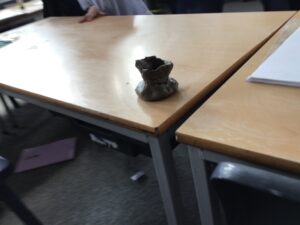
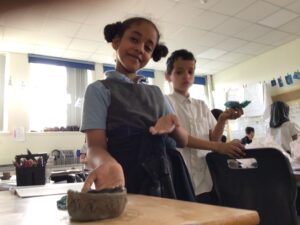
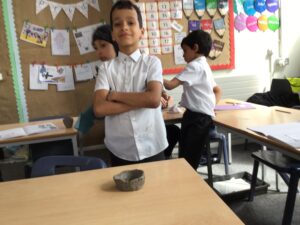
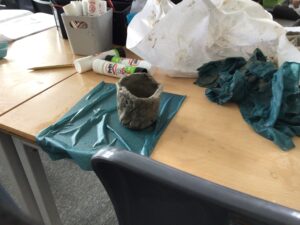



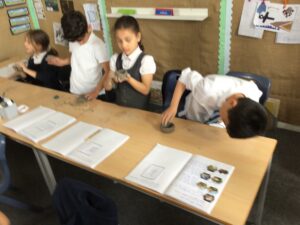


We combined science with history with our TIME topic and looked at how tools to tell the time have changed over the years. We created a timeline of discoveries and measured out our own sundials with our protractors.
108
We’ve had a great afternoon making circuits with a light and a buzzer to help us when making our buzz wire game. We also got to have a go at a buzz wire game!
149
This afternoon we created Supertato’s house using icing sugar and gingerbread. We mixed the icing sugar and water to use as glue to stick the house together.
254

To celebrate the new lunar year, we have been getting crafty in class making representations of dragons using a variety of resources. Look at our fabulous dragons! We also made our own lanterns after learning about the significance of the colour red.
231


This week we have been learning all about chefs. We took a trip to Tesco to get ingredients to create vegetable soup.
215

As part of our RE unit, we are finding out about mosques around the world and presenting our findings in Google Slides.
165
We created our own versions of the Liverpool skyline one night during The Blitz in World War Two.
152
Year 1 had a visit form lots of animals today to celebrate our learning in science.
149
Year 1 were very excited to have a visit from lots of animals today!
153




We have created some beautiful poems after reading Flanders Fields and used watercolours/charcoal/pencils to create some poppy artwork to mark Remembrance Day.
599